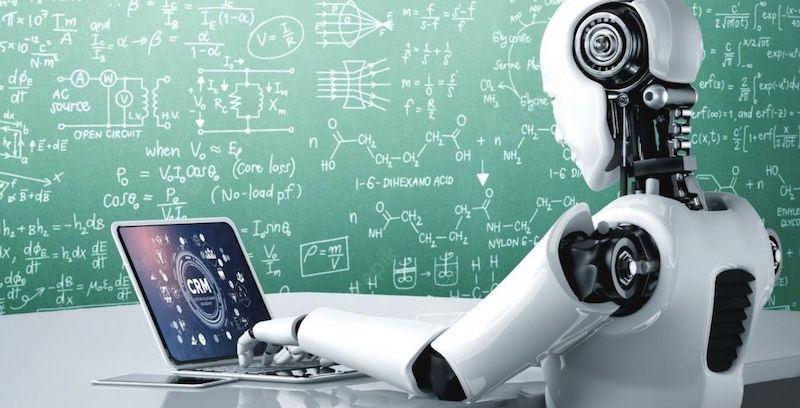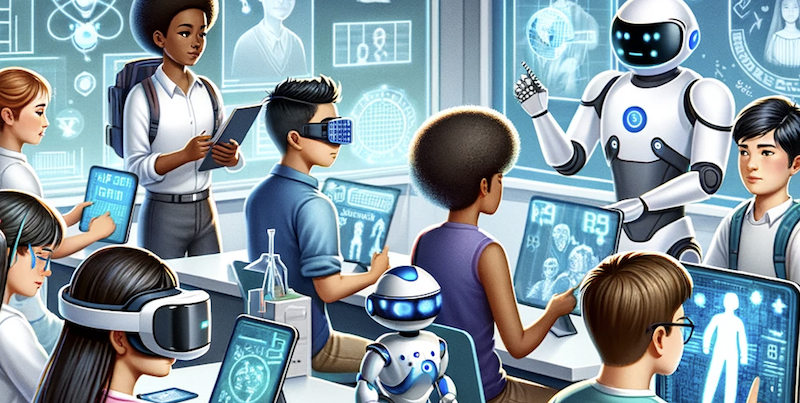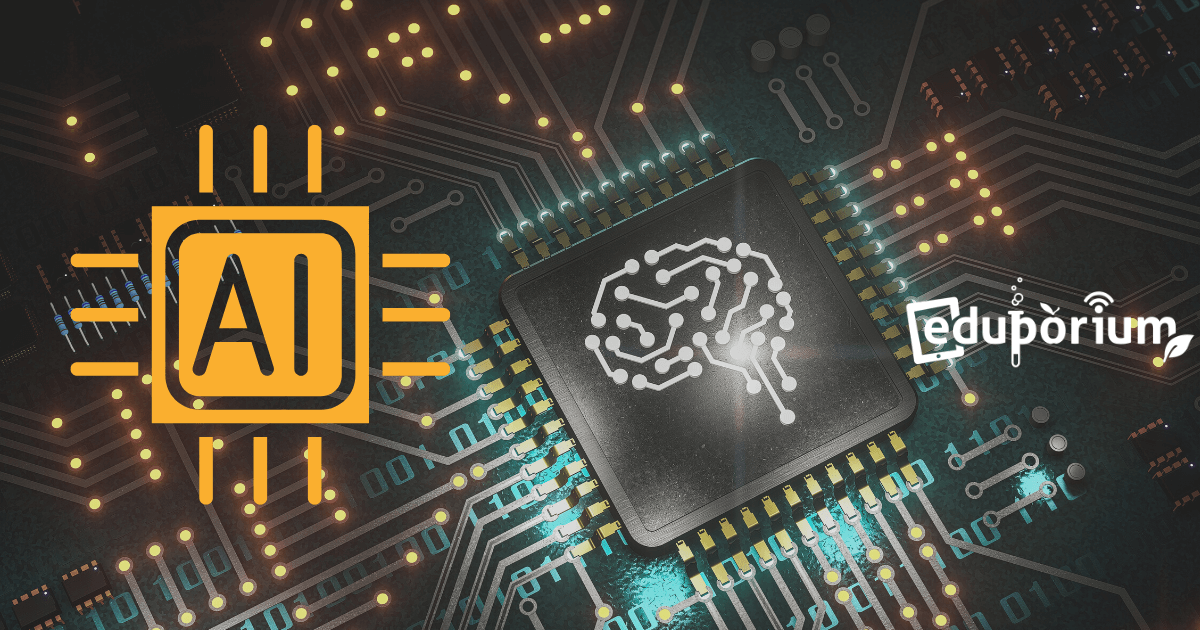During this last decade or so, numerous technologies have appeared in education, including many that we may not have imagined. Everything from robotics tools to 3D printers are now fairly common in innovative school districts despite previous beliefs that you’d need advanced tech skills in order to use them. Now, as technology gets more powerful, another type of it is preparing to make a new mark on education. Artificial intelligence refers to computer systems that are capable of completing a task that would normally require human intelligence. And, education leaders are finding ways—whether they're popular or not—of bringing it into learning with hopes of AI maximizing educator efficiency, improving student achievement, or both.
The Role of AI in Education
Despite still essentially being in its infancy, artificial intelligence is one of the most talked-about topics in education today. All around the world, members of the education community from kindergarten to college are expecting AI to take a great leap and further permeate day-to-day instruction considerably. In the next few years alone, the shift could potentially be dramatic. At its core, AI may not only create some impactful benefits within education but to humanity in general. While many people form their impressions of artificial intelligence from ominous content, AI can actually be used for good, too. It's already real common across many schools and can help administrators automate a lot of their tasks, but there’s a good chance that it could soon find its way into more and more classrooms, too.
Artificial intelligence platforms, it seems, share a real ability to reshape conventional teaching methods at some point soon. The idea is that it'll integrate fairly seamlessly with the technology that teachers already use and allow for a more streamlined experience. Whether they use online learning management systems or also augmented and virtual reality, AI systems could fully complement these tools and offer real-time teaching and learning for both educators and students. As for using AI in administrative management, the fact that it requires zero human assistance could result in it eventually automating all sorts of tasks across all levels of education. These include student registration, tuition collection, staff assignments, and, at the college level, even dorm room assignments. It'll also continue to play its role in beefing up digital security measures and keeping student information safe.
One other area that AI seems to figure into is within academic management itself. This umbrella involves all teachers or faculty members who might use AI in some fashion to ease their day-to-day workload. AI could even help them grade papers (which traditional grading software is not always able to do), evaluate student assignments, assign homework, and even more to help make the teachers’ job more efficient. Furthermore, it could also help them boost blended learning offerings and enhance personalized education for students. By emphasizing structure in pedagogical methods, improvement, research and development, assessment, and revision, AI could wind up being a very powerful technology in terms of boosting the overall education experience as well as student achievement.
Transforming the Classroom with AI
Every new piece of technology can improve the education world and, for many clued-in professionals, AI is no exception. Sure, there are skeptics, but artificial intelligence can certainly make a positive impact across education if instructors implement it strategically. Also, the unique opportunities that AI creates within K-12 education are two-fold. For one, it can help maximize efficiency as a tool for teachers, which we discussed in the first section, and it can also provide them a whole new area to teach students about while preparing them for our world in which AI use is now commonplace. There's also still so much to learn when it comes to artificial intelligence as we’re now only scratching its surface. Countless courses are likely to emerge, centering on its impact, potential, power, uses, and more—even before students reach college.
The fact is that lots of students have already encountered the basic forms of artificial intelligence numerous times—perhaps even on a daily basis. Things like chat bots or product suggestions for them to add to their carts are, in fact, forms of AI. Breaking it down like this often helps students to internalize just what artificial intelligence represents. And, by pointing out any examples they may relate to, this can paint a much clearer picture in their minds. Then, we have our virtual assistants, which illustrate that same premise in answering our questions. They essentially make a series of decisions and provide the most likely answer—even if it is still sometimes not exactly what we're looking for. Recognizing shortcomings in these types of AI solutions can also turn into a great classroom conversation for how students could make them more helpful.
In classes in which children have access to some necessary tools, they could also try creating their own AI. One great example we've heard about was a student who loved geography and essentially created a virtual assistant that could provide answers to all kinds of questions about various states. Simply by lining up their answers in the same way, this student also discovered that those questions could describe any state in the country. Many of the questions included the state population, capital, official bird, border states, and more. This is a bit of an advanced example, but it goes to show that this technology has the potential for helping kids learn a lot and also to open doors to some incredibly exciting new career possibilities.

Questions About AI in Schools
For all its potential power, AI brings along with it just as many questions. The truth is we simply don’t know how powerful AI will become or the effects on everyday life and learning. Some experts have predicted that no sector will be completely free from the effects of artificial intelligence, including education. If and when it rolls out on a massive scale, there are certain areas of education that will likely shift. One of those areas will be the curriculum. Since AI relates a lot to statistics and probability, some predictions surrounding its wider impact include this potential of it replacing traditional math subjects, like calculus and geometry, with some more specialized content areas. There would also likely be a smaller emphasis on children learning to make calculations since machines can already do that. Teaching computer science could also shift more towards learning the Python language more than others.
In addition to curriculum, AI looks likely to also change how school leaders manage things up at the district level. One example is a district leader using AI to scan resumes to help choose which prospective teachers they hire. In schools, educators and administrators could even utilize AI to potentially flag certain behaviors in students that are consistent with depression and some other emotional issues. AI tools can also learn to recognize certain things so that it doesn’t just pick out repetitive characteristics. For teachers, the thought isn't that AI would replace them, but that they might eventually use AI as a partner. In a truly perfect world, AI will do some of the not-so-glamorous work that teachers usually do, like grading papers or tests, while they focus more on the other things, like connecting with all students and offering them encouragement.
While it may seem like AI will do a whole lot of good, its emergence will likely not be perfect. Educators and administrators will learn to navigate its flaws since, after all, it’s far from perfect. Educators will also need to determine if they'll use AI as a decision maker or more of an adviser. If AI systems made decisions for them rather than simply providing suggestions, things could be different. It is important to realize that AI systems will make mistakes. That is because they're modeled off human brains, which, as we know, are not perfect. AI relies on probability and, sometimes, systems have errors. It also needs as much data as possible to run optimally, so there are some concerns that student and teacher privacy might sometimes be compromised. Concerns aside, there's still a strong chance of AI making a bigger splash in K-12 sooner rather than later.
Practical Uses for AI in Education
Besides some of the specific uses AI could offer, it also creates benefits that are a bit more practical. With all of the power behind artificial intelligence systems, it’s important for any educators who are planning on adopting it to remember that the goal of using it is to create an education experience that’s more inclusive, diversified, and engaging for their students. Among other benefits, AI can help teachers narrow their focus, eliminate or simplify redundant tasks, and optimize lesson plans. For these reasons (and many others), the emergence of artificial intelligence has created a disruption within education and certainly illuminated how the roles of educators might change as well as some of the other uses of AI in and out of the classroom.
Some more practical uses of AI in education include creating smarter content, like videos and tutorials, and optimizing gamification. Its primary abilities lie in collecting and analyzing data after sifting through massive amounts of information. It also then curates that data to organize content to be most relevant for use in the classroom. Plus, since we can consider AI an authoring tool, it can also provide interactive digital content that does way more for students than textbooks and worksheets. Whether students learn best with videos, infographics, or slideshows, AI can help create various forms of educational content. As for gamification, it can help it reach its full potential. This could allow teachers to leverage this method to motivate all the kids who need it. Finally, AI can help instructors create real-life learning scenarios and immersive experiences that pull students in and keep their attention.
In addition, artificial intelligence can help expand personalized learning, digital mentorship, and continuous learning and development, including teacher PD. For personalized learning, AI can help to determine which instructional approaches students prefer and provide teachers with that insight. AI tools, like chatbots, can communicate with children while they work, providing real-time guidance as they experience successes or difficulties. In terms of their learning and development, instructors could also choose to leverage AI-based training programs to learn how to use new tools more quickly or even to recognize any weak points within their methods. In these key areas and also with real-time tracking, artificial intelligence could contribute to a new world in education.

AI and Making Education Practices Smarter
So, it may essentially come down to this: can artificial intelligence—like any new technology—contribute to creating a more beneficial education experience for students and a more efficient experience for educators in and out of the classroom? Sometimes referred to as the fourth Industrial Revolution, artificial intelligence is opening up new doors for the future of learning. Teachers are able to seamlessly deliver most instruction online, students can travel anywhere in the world virtually, and even learn about different cultures using VR and AR. Though AI is just one piece of this, it helps tie together other key components. Those may include machine learning, 3D printing, the Internet of Things, sustainable technology, or even the metaverse. And, together, these technologies could be a driving force in creating a better education experience for kids.
Though it had moved fairly slow, the education sector is now really experiencing the emergence of these artificially intelligent platforms. One major way it’s helping educators is in providing key insights into what kids really need. With various algorithms, it can help teachers collect data and, more importantly, analyze and apply it to assist each student. Being able to access and understand this data helps teachers design tremendously personalized experiences for students—something you shouldn't overlook. Even tutoring efforts now regularly involve artificial intelligence creeping into the process. Using the same functions, AI platforms can help students in a more direct, one-on-one way and perhaps pick up things that traditional tutors might miss. Plus, potential immersive learning experiences can help to boost student engagement with a glimpse of what their futures might resemble.
As you can tell, the potential of AI in education (and beyond) is immense and could ultimately reshape its landscape. It remains to be seen whether or not that disruption will come in a good way. One final idea for integrating AI into teaching and learning surrounds exploring AI-powered platforms for developing student profiles. Simply by observing their actions and work, AI could collect all sorts of data on them. This would present teachers with new insights into how they learn best, what their weaknesses are, and so on. It may seem scary that artificial intelligence could learn so much about us, but we’re probably only scratching its surface. Both within and outside of education, artificial intelligence is poised to spark many new problems, questions, experiences, and solutions.
For the latest EdTech, STEM, and 21st century education news, follow us on Twitter and Instagram. Like us on Facebook, too, or sign up for our newsletter for our latest product announcements and offerings. If you have an idea for an Eduporium Weekly theme, send us a message on social media or comment below.



